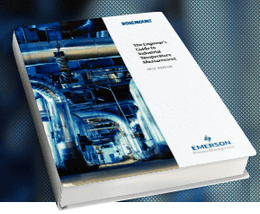Instrumentation professionals have many choices in technology when it comes to measuring pressure, temperature, level, and flow. Over time, experience teaches which technologies work best for which applications.
 For those new to the instrumentation and process control world, the choices can seem overwhelming. From a temperature measurement view, Emerson’s Ashleigh Hayes has a great article on the Control Engineering website, Temperature Sensors: Make The Right Choice, RTD Vs. TC.
For those new to the instrumentation and process control world, the choices can seem overwhelming. From a temperature measurement view, Emerson’s Ashleigh Hayes has a great article on the Control Engineering website, Temperature Sensors: Make The Right Choice, RTD Vs. TC.
She first defines these acronyms:
Two of the most common temperature measurement devices are resistance temperature detectors (RTDs) and thermocouples (TCs). The technology behind them is different, each having its own benefits that drive appropriate selection.
RTD sensors and thermocouples are a part of the mix of Rosemount temperature measurement technologies. After describing the RTD and TC principles of operation and materials of construction, Ashleigh points to the advantages of RTDs:
Normally, RTDs are much more repeatable and have better sensitivity than TCs. Long-term drift of an RTD is predictable, while a TC drift is often erratic. This provides the benefit of less frequent calibration and therefore lower cost of ownership. Finally, RTDs provide excellent linearity. When coupled with the linearization performed in a quality transmitter, a precision of about 0.1 °C is possible, which is much better than what is possible with a TC.
Conversely, TCs have the advantages of:
…faster response times and higher temperature ranges than RTDs, but are also less accurate. TCs have heavy gauge wire construction for durability and therefore can withstand high vibration (see Figure 1).
The article includes a detailed table comparing accuracy and interchangeability, stability, thermowell speed of response, calibration, potential temperature range, life span, installation considerations, vibration tolerance, lifecycle cost, purchase cost, and system performance with transmitter.
Ashleigh highlights three questions to ask:
- What temperature range you are trying to measure?
- What is your required sensor accuracy?
- Is process vibration a concern?
If you’re measuring temperatures above 850°C, a thermocouple must be used. Among the types of RTDs such as wire-wound and thin film, the accuracy level is different. Wire wound RTDs have higher accuracy than thin-film RTDs and TCs. From a vibration standpoint, thin-film RTDs offer the greatest reliability.
She closes:
To determine what type of sensor to use, first consider the differences between TCs and RTDs. The temperature range makes both sensor technologies feasible for this application. TCs are known for their higher vibration tolerance, so at a first glance TCs would appear to be a good option. However, in this specific instance the measurement requires the best possible accuracy. The right choice for this application would be a thin-film RTD. Thin-film RTDs are known for their higher tolerance to vibration than wire-wound RTDs, and will provide a higher accuracy than a TC.
 Read the article for some selection examples Ashleigh walks through to help reinforce the selection considerations.
Read the article for some selection examples Ashleigh walks through to help reinforce the selection considerations.
Also, you can sign up if you’d like to receive a free copy of the The Engineer’s Guide to Industrial Temperature Measurement by the Rosemount Temperature team.
It’s available as a printed book, viewable online, or downloadable as a PDF.




